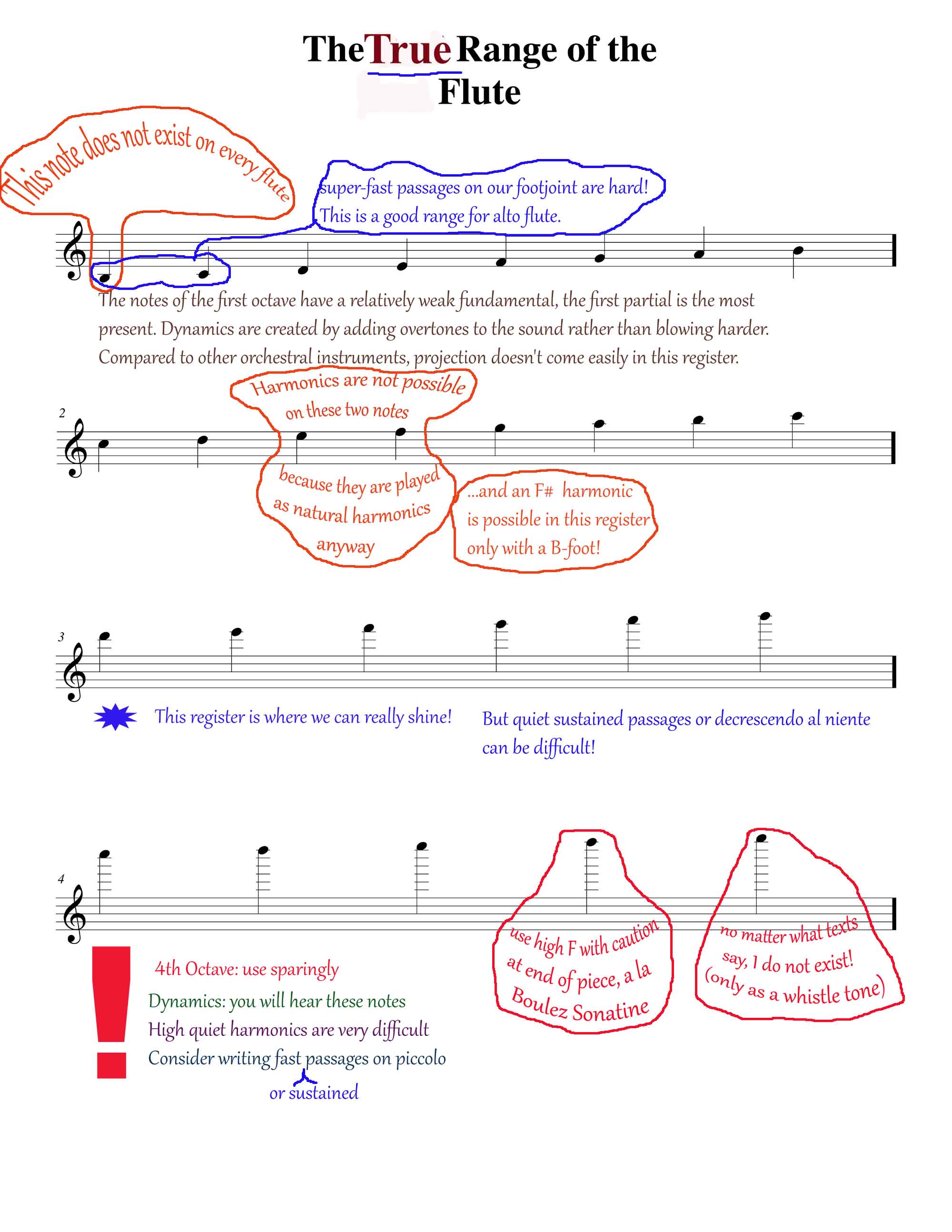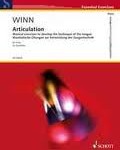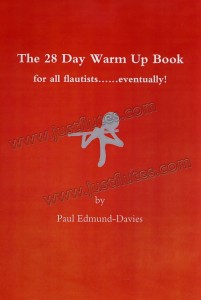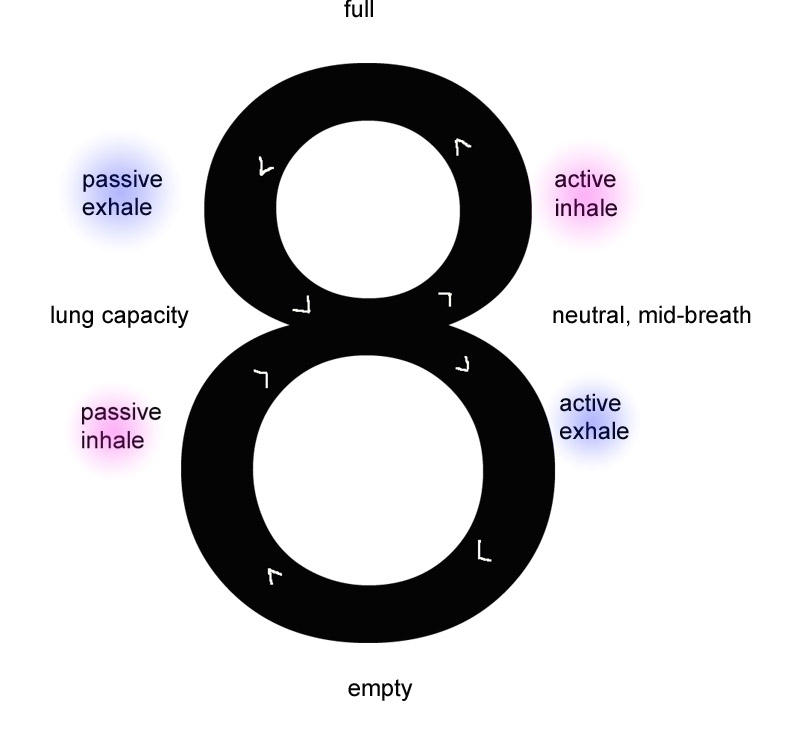 On May 24, 2012 Shiri Sivan, principal flutist of the Bremer Philharmoniker (Bremen Philharmonic) gave a masterclass for our flute studio at the conservatory in Bremen. This semester our students played a project as guests with the Bremer Philharmoniker and came back with glowing reports of the young new principal, recently graduated from the Von Karajan Academy of the Berlin Philharmonic. It was very motivating for them to play next to a player of such high caliber who was roughly the same age, so I immediately invited her to give an informal masterclass on orchestral repertoire.
On May 24, 2012 Shiri Sivan, principal flutist of the Bremer Philharmoniker (Bremen Philharmonic) gave a masterclass for our flute studio at the conservatory in Bremen. This semester our students played a project as guests with the Bremer Philharmoniker and came back with glowing reports of the young new principal, recently graduated from the Von Karajan Academy of the Berlin Philharmonic. It was very motivating for them to play next to a player of such high caliber who was roughly the same age, so I immediately invited her to give an informal masterclass on orchestral repertoire.
I want to focus here on her talk about mental preparation, but first I will mention several points she made about technique during the lessons.
A general observation of hers is that our students don’t use the flow of their air to carry their phrases. She also encouraged them to let the air flow work and use less movement of the embouchure and jaw to reach intervals and register changes (not to the point of inflexibility, of course). And because modern-day flutes are so well made, if you use good air flow, and focus the air into a good sound, your intonation will automatically be very near the mark without having to make excess movement. This was nice to hear in light of the recent hoopla about flute intonation and tone-hole placement.
An interesting point about articulation: her strategy to achieve lightness is to practice single tonguing rapidly, working your way up to sixteenth notes at 132. In real life, you would double tongue passages that quick, but if you practice short passages with super fast single tonguing, say, a one-octave scale up and down, your tongue can’t help but move lightly. It can’t move quickly in a heavy way. Then try to transfer this lightness to double tonguing.
Her talk on mental preparation for auditions was based on her own recent experiences. Listening to her, I wondered if she had done a lot of reading research, since what she said resonated with what I have read over the years. But in fact, she said she had done little or no reading. Here is a synopsis:
Long-term preparation
1. Gain good experiences, not necessarily through major concerts or auditions, but any positive performance. Oscar Wilde said “Experience is the name everyone gives to their mistakes”. You can learn from mistakes but it is absolutely essential for our confidence building to learn from your successes, what were you doing right?
2. The journey of self-acceptance. Some of those with a strong sense of profession and passion may have defined themselves in terms of what they do at an early stage, and missed the adolescent self-searching phase of asking “Who am I”? But if you know and accept yourself you have an unlimited source of power. Know that you are a worthy human being, no matter how well you play the flute. Judge yourself harshly on your effort, but never on your result! This is the most complicated and important topic in this context, because your peace and happiness as a person is also important.
3. Keeping in proportions. Think big, looking for an orchestral job may be a journey, either short or long, but it is a phase (like your studies at school) and must pack a lot of positivity and patience. No audition is crucial!! It is a process of learning and gaining experience which will end in the right place when you are ready for it.
Mid-term preparation
1. Mental readiness. This should start as soon as the audition raises your stress levels when you think realistically about it, it may be six months or two weeks ahead. There is no reason why the performance should be any different from in your imagination, imagining it negatively is not a good sign.
Try to imagine the situation as specifically as possible, every piece of information, the hall acoustics, the jury members, the pieces, your clothing. The twist is: you need to imagine the situation as accurately as possible, but also positively. Maybe in the beginning it will be hard, but with persistence it will change slowly. Stick to those positive feelings. Remember them from past performances where you played well, and make it part of your daily practice. Run-throughs are important, but take them at a distance of one week from the audition, so you have time to draw conclusions and get emotionally detached from the positive or negative experience.
2. Keep positive. Words have more power than we think. When we make excuses like “I am not ready”, “only the students of …….. can win”, “I’m just doing this for practice”, etc. we think that we are reducing the expectations from outside and inside, but actually, we are unconsciously convincing ourselves of failure. We are doing a mental preparation for a bad performance. Mantras can influence our consciousness if you really stick to them, even when you don’t believe in them. Actually, a mantra would be quite useless if you already do believe in it. Just find one and repeat it again and again, as stupid as it sounds. It will be your immune system for negative, “what if” thoughts or expectations. Another important point is belief, belief that you are worthy of the position, and to accept success as an option.
3. Did I mention be well prepared?
Short-term preparation
1. The obvious: Sleep. Eat. Rest. Put the flute in its case 24 hours before the audition. On the day of the audition, make sure to organize yourself so that you have enough time to warm up before the audition. Wear something you feel comfortable in.
2. You may find yourself warming up in a room with 20 other flutists, which is tiring, distracting, stressful and unhelpful for your sound and mood. If you have a long time to wait, it is better to keep your energy and find a quiet place to rest. The most important thing in auditions is concentration. It cannot be achieved in a second, it must be achieved with some kind of meditation. Find a way to make your body run slowly, and to let your mind focus on one thing. Find a place of silence, even if it means that you close yourself in the toilets 10 minutes before your audition. Go through your difficult parts slowly in your mind, breathe deeply, move slowly, do stretches, don’t talk to anyone, and don’t play with your iphone. Concentration is the best antidote for stress, it routes your mind to the right place. If in the audition you don’t manage to concentrate on the music, concentrate on being concentrated. Knowledge reduces the levels of stress, gives confidence and the ability to talk to ourselves during the performance, to be our own teacher. If we have in mind a clear image of how we want to sound, and how we want to achieve it, this inner discussion will not only provide good results, but will also take the focus away from the stress factors.
Stress is good
Having said all this about managing stress, I believe it is an integral, important part of our profession. It is a motivating factor, and in the moment of performance can keep us alert and concentrated. It is only a matter of proportion. The key is not to eliminate fear, but to gain some control over it.
Finale
An audition is a concert. If you don’t have fun, no one will. The jury has heard 100 flutists (less fun for them) and they just want to enjoy your performance, they want you to succeed. The jury is not looking or mistakes, and no one loses an audition because of making one. Of course the jury is looking for a good flutist, but mainly for a musician who suits their personal taste, and who they believe would suit the orchestra well. And that is not something you can control, so just do your best.
Thank you, Shiri!










